The Suspense of Context
Note: Since I’m a few weeks behind on our regular Freebie column, today our Free Subscribers get a treat with this week’s Spooky October edition of the PAID Baddestmamajam newsletter! Each week our paid subscribers get a deep-dive into one of Jessica’s Favorite Films. Take a look at the film analysis being thrown and consider an upgrade to the one newsletter I promise not to forget to write (because I am getting paid for it.)
I have a dog named Whiskey. Whiskey is a fairly barky dog. He barks at people outside, he barks at dogs in the distance, he barks incessantly at a willow tree in our yard, he barks at bees. He’s a rescue, so we’ve never been able to ascertain exactly what the hell his damage is, but we do know this: Whiskey asserts his dominance and command over his surroundings by barking. Listen up, you people/far dogs/willow tree/bees, he is saying, this is MY space, and MY rules.
Dogs who are truly alpha in nature will claim a space immediately. They are very invested in being the top of the hierarchy, and so they like to mark their territory right off the bat.
Which is why it was so interesting to us that the first time we traveled with Whiskey, he stopped barking. We’d be staying at a relatives house or a rental, somewhere new and exciting, and Mr. Barky McBarkerston would go silent as the grave.
For exactly three days.
It took a few trips to work this out, but finally, I realized: Whiskey was discovering his context before deciding to claim it. In his own yard, where he knows every blade of grass and just the branch the opossum prefers to sleep on in the willow tree, he is master of his context.
But in a new space, where there are new sounds, and new people, and different far dogs, and no idea where the opossum is snoozing - he recognized that he was in danger.
Have you ever wondered why so many suspense films begin with a stranger arriving at a hotel, or on an island, or at a lonely new house? New places are a key element to developing suspense in a film. Maybe it’s a biological response when we are away from our birthplace - since we were not brought up here, we worry that there are secrets we might tread upon that we do not have the context to understand. We do not know, in effect, what to bark at.
Such is the setting for our deep-dive today, a rare Disney flop with a shockingly dumb ending that, nonetheless, has suspense and spookiness coming-out its ears. Come into the forest with me, where something is waiting, something is listening, something is The Watcher In The Woods.
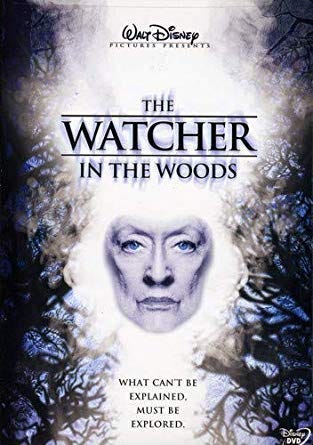
What Exactly Are We Watching Watching Us From These Woods??
For those of you who did not grow up in the 1980s with the rule “you can rent anything at the video store as long as its Disney,” you may never have heard of this Mouse House Misfire into the realm of suspense and supernatural doings.
The Watcher In The Woods is a 1980 live-action feature with a famously fraught post-production crisis, marked by the film being pulled out of theaters after ten days and re-shot to have a different ending.

The story follows American sisters Jan and Ellie, who have moved with their parents to a rural English manor next to a lovely, lush forest. The house is secluded and owned by the reclusive Mrs. Aylwood (Bette Davis! Bette Davis is in this, you guys!) After seeing Jan, and being startled by the girl’s appearance, she decides to rent them the house, speaking to something or someone in the woods to let it know she’s allowing the family to rent the house.
Almost immediately, both girls begin to have strange, supernatural experiences, and a sensation that something in the forest is watching them. Jan begins to see images of triangles and flashes of light, and eventually encounters a blindfolded girl in mirrors who could be her twin, reaching out for her to help.
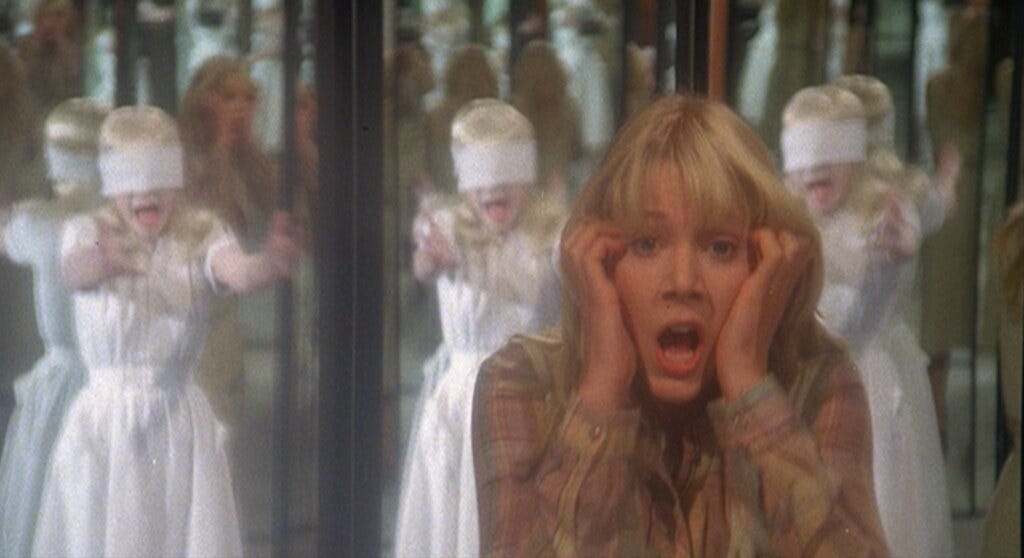
Her younger sister Ellie, meanwhile, hears strange whispers, talks in her sleep, and begins having premonitions.
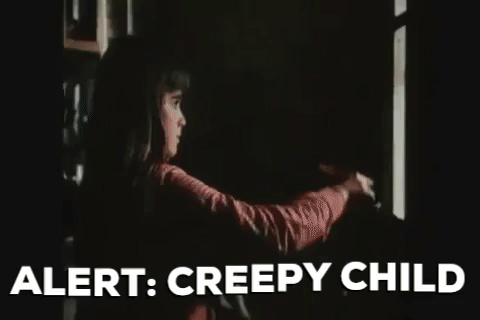
When Jan nearly drowns after seeing a blue circle in a pond and falling in, she’s rescued by Mrs. Aylwood, who tells her about her daughter’s disappearance 30 years ago. On the night of a lunar eclipse, Karen vanished while playing some kind of game with her friends in an old chapel in the woods. Jan interrogates the friends and finds that they attempted a seance during the lunar eclipse, and lightning struck the tower of the old chapel ruin they were in. Karen vanished during the ritual, and the remaining friends made a pact never to speak of it.
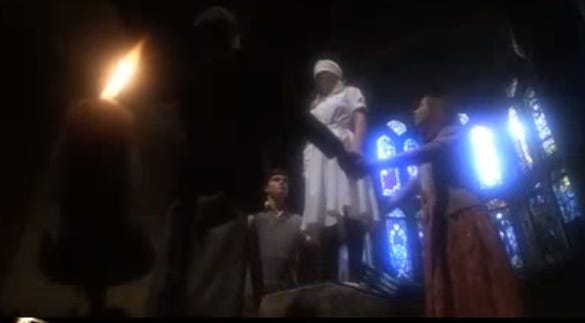
Now here is where shit gets really, really wacky.
During another eclipse, Jan forces the three original friends to recreate the ceremony in the same location, hoping it will bring Karen back. Meanwhile, Ellie becomes possessed, and finds Jan at the chapel, explaining that the first time the ritual was done, Karen switched places with…
with…
An alien.
Yes.
Okay. An alien. REALLY? AN ALIEN? Yes. Ok.
Karen’s body was trapped in a sort of purgatory, and the alien presence, without a body, has inhabited the woods ever since, and is the source of the strange experiences Jan and Ellie are having. As the eclipse occurs, Jan’s body is nearly taken as Karen’s was, but instead, her boyfriend saves her, and she is pulled out of the summoning circle. As the eclipse fades, Karen returns, exactly as she was 30 years ago, as her mother arrives at the ruin.
Ending Shenanigans
Now, full disclosure, I watched this movie 600 times (it doesn’t matter, I am clearly fine) as a child. And if you had told me, before I re-watched it two or three years ago, that it involves an ALIEN BODY SWITCH, I would have laughed in your face. So imagine my shock when I found that the original written ending was supposed to include a full-on sequence on an alien planet, and a SECOND ending, which was shown in the famously panned first screenings, had the alien show up, but just in the church at the end.
Instead, the version I’d always seen just had a possessed Ellie explaining Karen’s fate to Jan, but it happens so quickly and is at the climax of so much suspense I had absolutely no idea there was an alien involved. They were doing a seance! In the woods! In a place crammed full of druidic and pagan traditions! How did aliens get involved?!
All three of the endings are…pretty bad. The one that is considered the official ending, where Ellie explains the (sigh) aliens, is the best of the three, but it doesn’t really provide much catharsis besides poor Karen getting to take off her damn blindfold, which must be very sweaty after 30 years.
But part of why the ending(s) are so frustrating is because the suspense, to that point, is excellent. So we’re going to ignore that the end is a giant misfire and focus on the good stuff, cool? Cool.
Suspense As Destabilization
At its most basic level, suspense in a film is a result of destabilizing a normal environment through uncertainty. If I’m supposed to meet you at a diner for our weekly lunch date and you don’t show up, and you text me that you’re running ten minutes late, that’s not suspenseful. The situation may be slightly abnormal because you’re late, but I know why, so it’s not suspenseful.
If I’m supposed to meet you and you don’t show up, and there’s no text, and then I find your number has been disconnected, so I go to your house and find that someone else has been living there for weeks- that’s both abnormal and uncertain. We have stepped outside the daily, mundane explicable problems and delays of life, and into the realm of suspense.
So the filmmaker’s job, in creating a suspenseful movie, is to gradually destabilize the environment for the characters, and often the audience. The less you trust and understand the world around you, the scarier things get. This is where The Watcher In The Woods excels, through several tactics it utilizes incredibly well.
The first, as I described at the beginning of today’s column, is the inherent destabilization of a new location. Like Whiskey the Dog, Jan is in a brand new environment where she doesn’t know the history, the people, or the rules. When a window breaks under her hand in an odd triangular pattern, maybe it was just an old window.
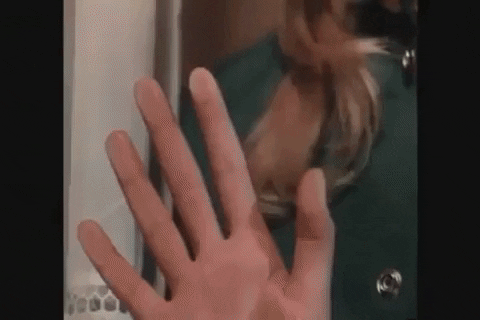
If you had set this film just at this girl’s house where she’s lived her whole life, you already knock down your suspense because the certainty of the environment is reassuring. Immediately starting us off with a new location puts us off our footing, and gets the ball rolling.
Another great tactic that the film uses is a destabilization of the chain-of-command. Jan is a 16 year-old girl. She is not supposed to be in charge of her own destiny at this point in her life. So when weird shit starts happening, she actually does the reasonable thing and tells her parents exactly what is going on and what she’s experienced. They immediately tell her she’s being ridiculous and imagining things, and that Mrs. Aylwood is just a weird old lady.
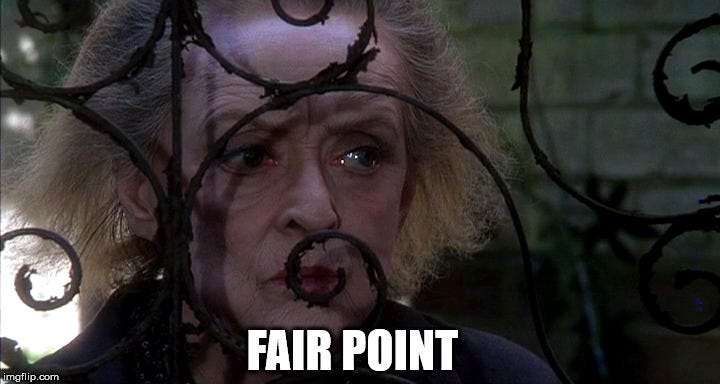
So the natural chain-of-command in her life of who is supposed to deal with scary things is disrupted, leaving Jan, a child, in charge. Watcher then goes a step further by revealing that the perpetrators of whatever is going on are three adults in their 40s, the former teens who conducted the ritual where Karen disappeared. So exactly NONE of the adults can be trusted, with the possible exception of Bette Davis’ Mrs. Aylwood, and even she is, let’s face it, a creepster smoothie.
Pushing the envelope, the film also puts the care of Ellie into her older sister’s hands. Unlike Jan, Ellie doesn’t recognize that the supernatural things happening to her are weird - she can’t remember when they occur. And with their parents AWOL, Ellie is now the only authority figure and her sister’s caretaker, neither of which feel comfortable or safe.
The third tactic the film uses is where the movie goes a little meta on us, because the function isn’t to destabilize Jan, it’s to destabilize US. The positioning of the audience in suspense films is a big variable. In the first half of Psycho, we are mostly just as clueless as the main character and figuring things out as we go. After Janet Leigh’s death, however, we are ahead of the POV characters, and understand the level of danger in the situation that they don’t, our feeling of suspense now tinged with dread.
In Watcher In The Woods, the destabilization of the audience comes through the camera POV. While we see most of the film through Jan or another character’s perspective, there are also frequent shots, from their very beginning, from the POV of the Watcher in the Woods itself. The shots aren’t just static, they’re handheld and move, so we get the sense that whatever is out there, its sentient and mobile.

While this wasn’t a new tactic, it isn’t particularly frightening on its own. In horror movies, we frequently see things from the villains’ POV, but we generally know who the villain is and what their aim is. But because the Watcher remains ambiguous, this camera technique has a different effect: It feels intrusive.
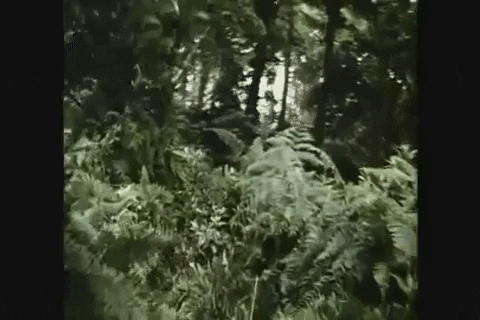
We want to see things from Jan’s POV, but because we keep being forced into the Watcher’s perspective, it creates an unavoidable, growing presence. It’s there even though we don’t want it to be there, even though we, as movie goers, know we should be seeing a scene from Jan’s POV.
And just like that, we go back to the definition laid out above of suspense: Suspense occurs when we know how things should go, they aren’t going that way, and we can’t figure out why. We are now the sap of that situation. Conversely, by being forced unwillingly out of Jan’s perspective, we are pushed further into empathy with her character’s fear and confusion.
All That And…Not A Bag of Chips
Unfortunately, despite the great head of suspense steam built up through the excellent use of destabilization, the other half of making a great suspense movie is relieving it. Catharsis is key to making your audience not hate you, and while technically everything gets explained at the end of Watcher in the Woods, it’s too messy to really be the relief we need.
We think about movies as one attempt to make something good, but in reality they’re more like a one-team baseball game. Every scene is another batter up, and if you hit more than you miss, the film wins. But even if you don’t hit enough to win, those hits still count!
As a kid, Watcher In The Woods scared the bejeezus out of me for years, and I was surprised that my world-wiser Gen-X nieces were still freaked out by it 15 years later. The lack of catharsis in the movie actually works to make it scarier, I believe, because you don’t have the comforting relief of remembering what the solution to the puzzle is. Which again, remember, was at one point…This.
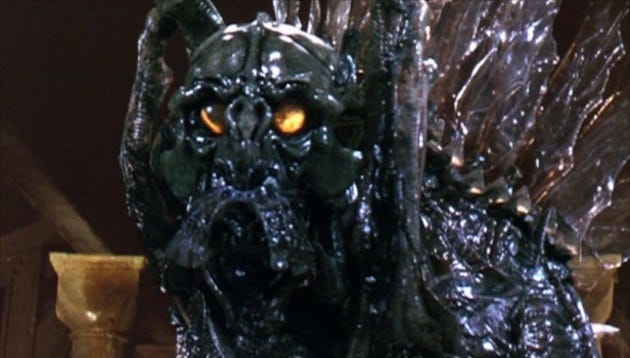
But you’ll never forget Ellie writing the word NERAK on a dusty window, I guarantee it.
Hope you enjoyed this week’s Spooky Deep Dive! As always, please hit the heart icon if you enjoyed reading! I’ll be off next week, as we’re headed to the World Premiere of our own movie in the woods at the Twin Cities Film Festival. Have a spooky week!


